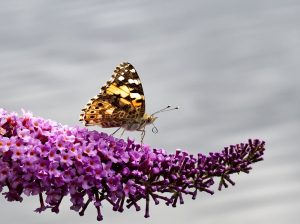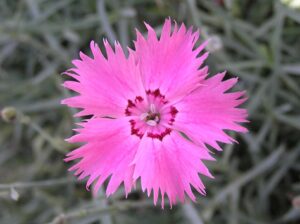If you have a sunny garden or yard that begs for colorful blooms and lush greenery but you can’t commit to the hefty maintenance that some plants require, you’re in luck. There are plenty of full sun, low-maintenance plants that thrive in bright light, allowing your garden to flourish with minimal effort.
Abelia
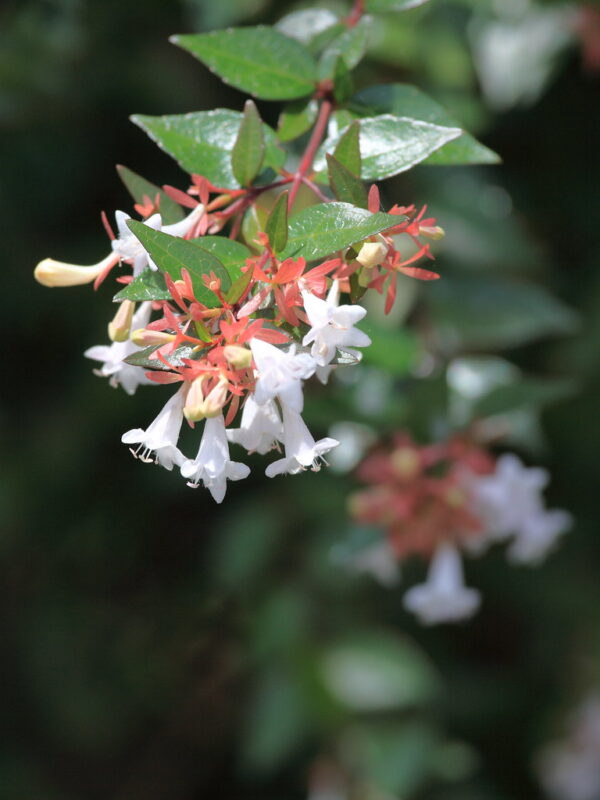
Abelia is a stunningly versatile shrub appreciated for both its ornamental beauty and functional roles in the garden. This hardy shrub thrives in full sun and adapts well to a variety of soil types, from sandy to clay. One of its most appealing features is the glossy, elongated leaves that can take on a golden hue in the fall, offering multi-season interest. The plant produces fragrant white or pink flowers from late spring through the summer, attracting hummingbirds and butterflies, enlivening your garden with buzzing activity.
What makes Abelia particularly appealing is its low-maintenance nature; it can tolerate drought conditions once established, necessitating minimal watering. As for pruning? A light trimming after flowering is all that’s needed to maintain its shape and encourage bushiness. Its attractive form makes it ideal for use in borders, mixed beds, or as a specimen plant, while its adaptability ensures it can thrive in various environments without excessive care.
Azalea
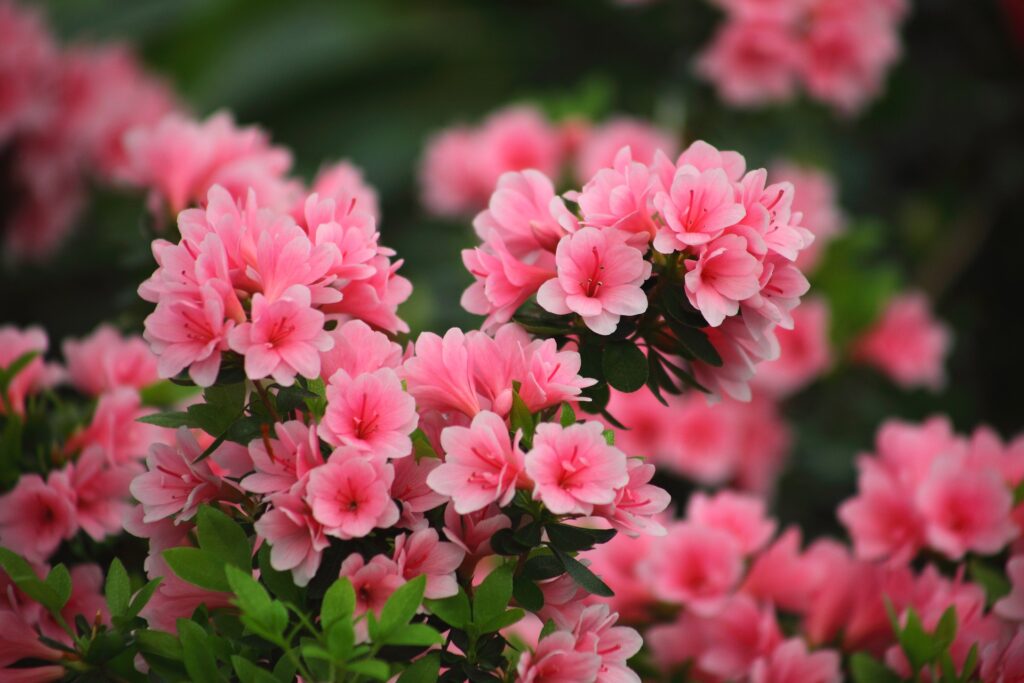
For splashes of color, few plants can rival the brilliance of azaleas. These flowering shrubs are a staple in many gardens due to their prolific blooms. Available in numerous varieties, azaleas blossom in vibrant hues ranging from soft pinks and whites to vivid reds and purples. They flourish in well-drained, slightly acidic soil—conditions typically found in wooded areas. While they prefer this type of environment, azaleas are resilient and can adapt to different soil conditions.
Once established, azaleas prove to be drought-tolerant, requiring minimal watering. They benefit from occasional deadheading to encourage new blooms and can be shaped through light pruning after flowering. Their ability to repel pests and disease means they rarely need chemical interventions, making them an excellent choice for low-maintenance gardeners. Whether you use them as foundation plants, in mass plantings, or in mixed borders, azaleas will reward you with breathtaking displays each spring.
Bearded Iris
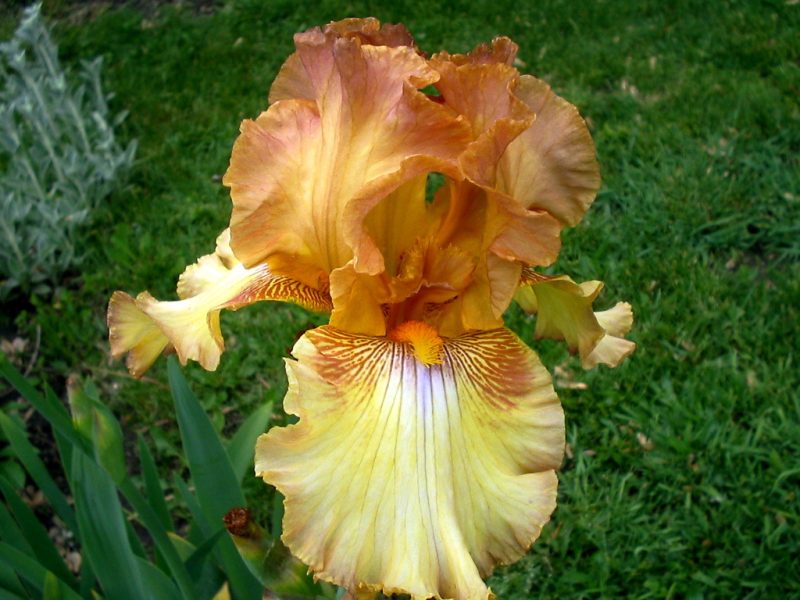
Bearded irises are perennial favorites known for their striking flowers and diverse color palette. These eye-catching plants are available in nearly any color you could desire, often with intricate patterns and forms. They thrive in full sun and prefer well-drained soil, establishing themselves firmly in garden beds, borders, or even rocky areas. Once planted, bearded irises require little care but appreciate occasional watering during dry spells.
One remarkable characteristic of bearded irises is their resilience; they can survive even the hottest summers, producing blooms that stand tall and proud. After their initial blooming period in late spring to early summer, they can be divided and shared with friends or expanded in your garden. Minimal maintenance is needed, aside from occasional deadheading and a bit of division every few years to rejuvenate the plants. With stunning architecture and vibrant hues, bearded irises can elevate the aesthetic appeal of any sunny garden.
Black-eyed Susan
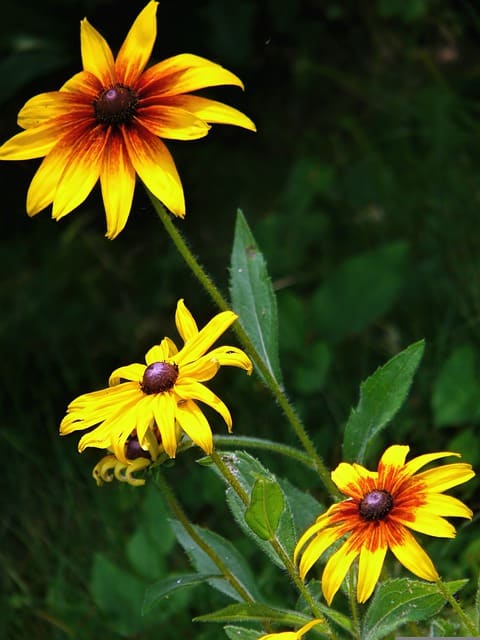
Black-eyed Susans are quintessential garden plants adored for their cheerful golden-yellow petals and dark centers that invite smiles. They are remarkably easy to grow, preferring sunny spots and well-drained soil. Once established, these hardy perennials can tolerate periods of drought, making them a faultless choice for low-maintenance gardens. Additionally, they can spread and naturalize, filling empty spots in your garden and creating a sea of color that seems to dance in the breeze.
Notably, black-eyed Susans are incredibly low-maintenance. Deadheading spent blooms helps to prolong flowering, but it’s not strictly necessary. This hardiness allows them to bring vibrant color from summer through fall, creating a delightful backdrop for other garden plants. Their pollinator-friendly nature attracts butterflies and bees, which is wonderful for biodiversity. They thrive in various settings—whether in mass plantings, as part of a wildflower garden, or sprinkled throughout perennial beds—making them a garden staple.
Bugleweed
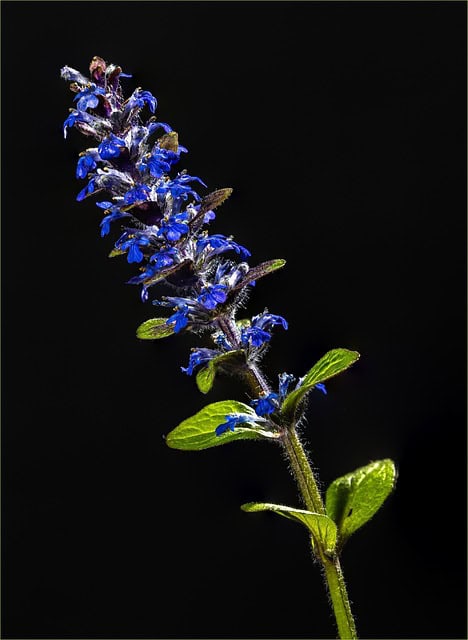
Bugleweed, also known as Ajuga, offers gardeners a stunning groundcover option that thrives in full sun to partial shade. With its rich foliage, ranging from dark green to striking burgundy, Bugleweed provides an impressive visual impact in any landscape. During spring, spikes of small blue to purple flowers emerge, serving as a magnet for bees and butterflies, enhancing the ecological importance of your garden.
Low maintenance is the hallmark of Bugleweed. Once established, it can suppress weeds due to its fast growth and ability to fill in spaces quickly. It adapts easily to various soil types and doesn’t require regular watering, making it particularly appealing for those who may forget about routine chores. Ideal for use in shaded areas under trees, as a ground cover around the garden, or in containers, Bugleweed allows you to combine beauty with ease and nutrition by attracting pollinators.
Butterfly Milkweed
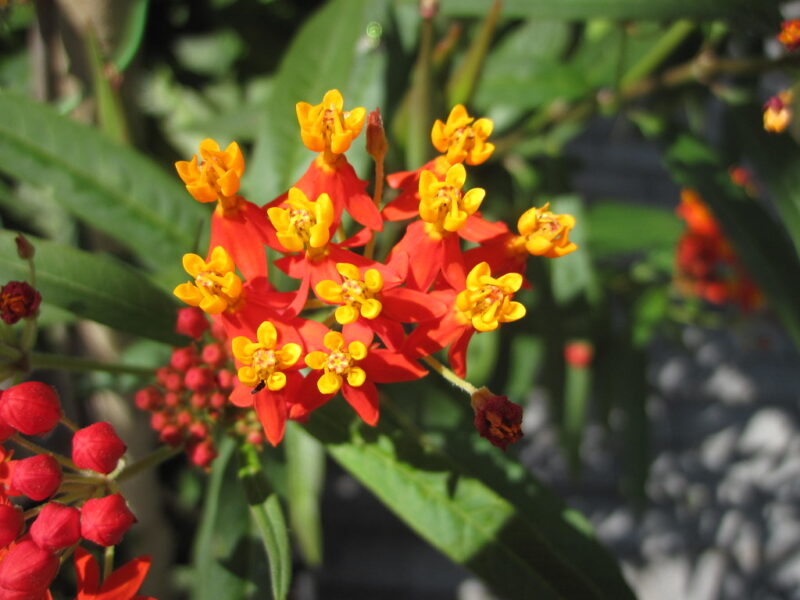
For those looking to create a pollinator-friendly garden, butterfly milkweed is a must-have. This native plant thrives in sunny locations, showcasing stunning clusters of orange and yellow flowers that are specifically designed to attract butterflies, particularly monarchs. Butterfly milkweed is not only beautiful but also resilient, requiring minimal watering and maintenance once established. It is perfectly suited to growing in poor soil and hot, dry conditions.
An additional benefit of butterfly milkweed is its ability to reseed, ensuring ongoing blooms and providing a reliable food source for pollinators year after year. Like other native plants, it is adapted to local ecosystems and provides incredible ecological value. To keep your butterfly milkweed thriving, simply deadhead spent flowers and avoid excessive watering. It can be a charming addition to a wildflower garden, a border, or along pathways, infusing your landscape with vibrant color and life.
Coreopsis
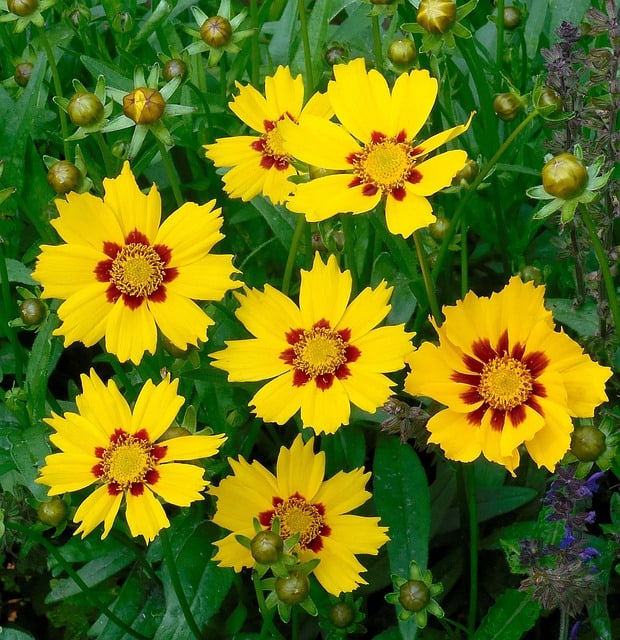
Coreopsis is not only easy on the eyes but also exceptionally low-maintenance. Commonly referred to as tickseed, this perennial thrives in sunny gardens and produces abundant daisy-like flowers that bloom all summer long. Ranging in color from cheerful yellows to rich reds, coreopsis flowers add a radiant touch to any garden. Its ability to flourish in poor soils and withstand drought conditions after becoming established makes it an ideal choice for gardeners seeking vibrant colors without heavy maintenance requirements.
This hardy perennial also provides ecological benefits, attracting butterflies and bees–essential pollinators for a thriving garden. Coreopsis tolerates a wide range of soil conditions and requires little care beyond occasional deadheading and watering during extremely dry periods. As a low-maintenance addition to borders, rock gardens, or alongside pathways, coreopsis easily delivers long-lasting color and delightful blooms that enliven any outdoor space.
Creeping Phlox
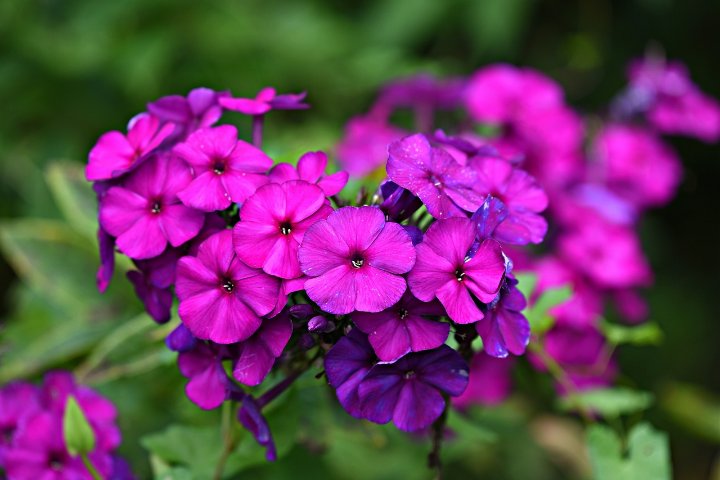
Creeping phlox is a low-growing, evergreen perennial that flourishes in full sun and produces a stunning blanket of colorful blooms during late spring. With colors ranging from brilliant pinks and purples to whites, creeping phlox brings incredible visual appeal to rock gardens or hanging over walls. This hardy ground cover spreads rapidly, quickly filling in bare areas of soil and suppressing weeds in the process.
The care requirements for creeping phlox are minimal. It requires well-drained soil but is tolerant of poor soil, making it adaptable and easy to manage. Once established, a light watering during drought is all that is needed, and little-to-no pruning is required outside of ensuring it remains tidy. Creeping phlox works especially well in borders or as a filler between stepping stones, allowing for effortless beauty while contributing to a more manageable garden.
Daffodil
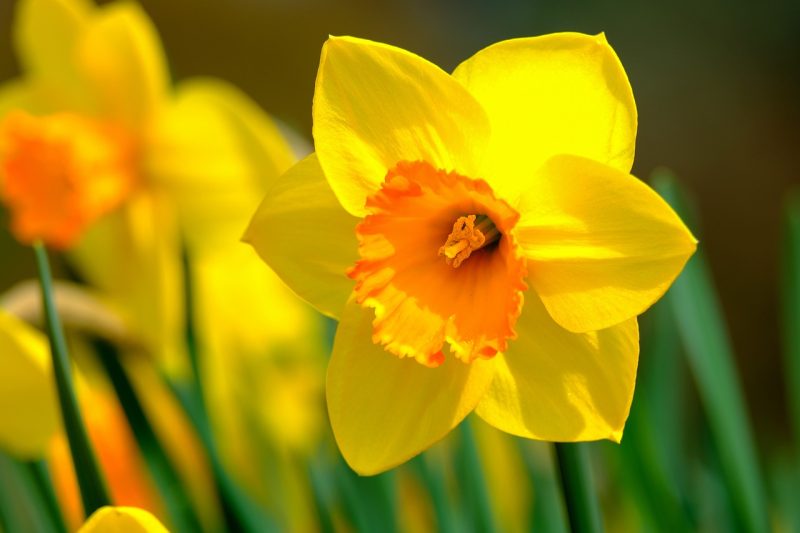
Daffodils, with their iconic trumpet-shaped flowers, are perennial favorites for many gardeners. These hardy bulbs herald the arrival of spring with bright yellows, whites, and even oranges, brightening up any landscape after a long winter. Once planted in well-drained soil that receives full sun, daffodils require minimal ongoing care. They are deer and rodent resistant, making them a reliable option in gardens where such pests may pose a problem.
Once established, daffodils naturalize beautifully, multiplying and coming back year after year to provide an ever-expanding spectacle. Their low-maintenance nature means that all that is needed is a bit of deadheading to keep them tidy after blooming and allowing the foliage to die back naturally. Daffodils are an ideal choice for mass plantings, lining walkways, or filling in sunny spots, ensuring your spring garden is both lively and low-effort.
Daylily
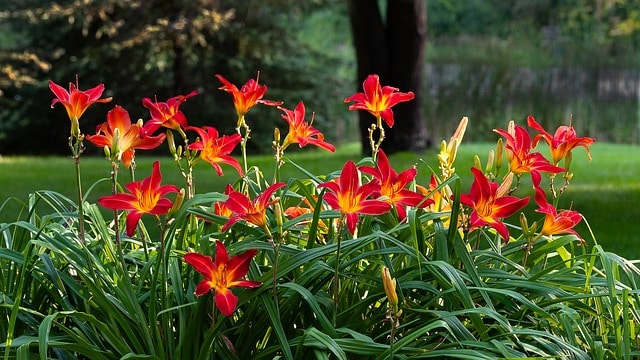
Daylilies are aptly named, as each blossom usually lasts only one day, but the plants produce an abundance of flowers throughout the growing season. Known for their vibrant colors, daylilies can present a range of shades from soft pastels to deep reds. These hardy perennials thrive best in full sun, though they appreciate some light shade in hotter climates. Established daylilies are drought resistant and can adapt to a range of soil types, making them suitable for various garden settings.
One of the benefits of daylilies is their relative ease of care. Aside from periodic deadheading, they require little maintenance, and their resilience allows them to bounce back from tough weather conditions. Daylilies also work well in mixed borders, in containers, or as part of a perennial garden. Their long-lasting blooms and adaptability make them a favorite for those seeking vibrant color with minimal effort.
Dianthus
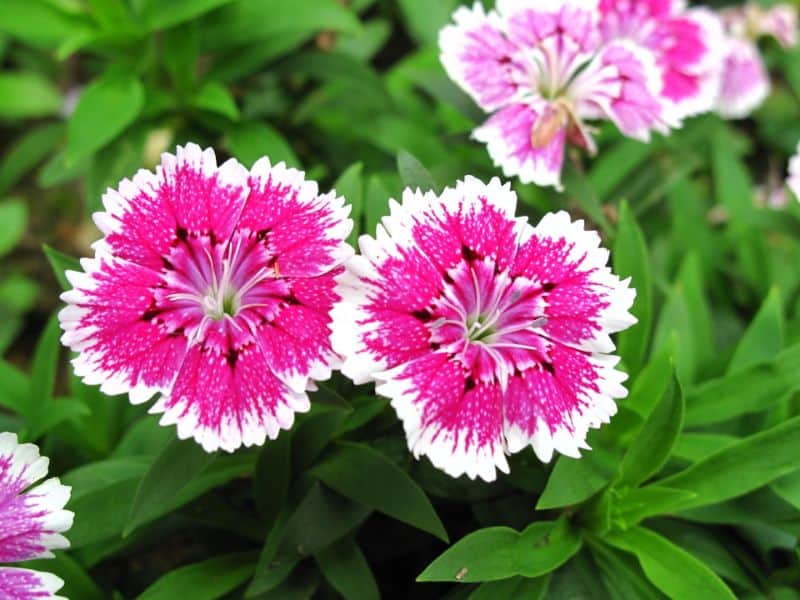
Dianthus, often referred to as pinks, is a delightful addition to sunny landscapes with its fragrant blooms and charming flower shapes. Available in a range of colors from soft pinks to bright reds, this perennial thrives in well-drained soil and full sunlight. Once established, dianthus requires minimal watering, making it an ideal choice for low-maintenance gardeners. Its tough nature allows it to endure moderate drought conditions, further contributing to its effortless care.
Dianthus also offers excellent versatility in garden design. It can be used to provide ground cover, in borders, or planted in containers for added color on patios and balconies. During the blooming season, the fragrant flowers attract pollinators, enhancing your garden’s ecosystem. Its ability to bloom for several weeks adds to its appeal, ensuring that you have a reliable splash of color in your sunny garden without heavy maintenance demands.
Feather Reed Grass

Feather reed grass is a remarkable ornamental grass that adds texture and height to gardens. It thrives in sunny locations and showcases tall plumes that sway gently in the breeze, creating movement and interest. This perennial grass prefers well-drained soil and isn’t very demanding beyond the initial establishment phase. Its drought tolerance means that it requires little watering once settled into its new home.
One of the notable attributes of feather reed grass is its adaptability; it can be used in various garden designs, including borders, mass plantings, or as a stunning focal point in mixed beds. The plumes transition in color from green to tan throughout the seasons, providing visual interest all year round. A simple spring cutback is all that’s needed to maintain its appearance, making it a lovely choice for low-maintenance gardening while delivering beautiful aesthetics effortlessly.
Flowering Quince
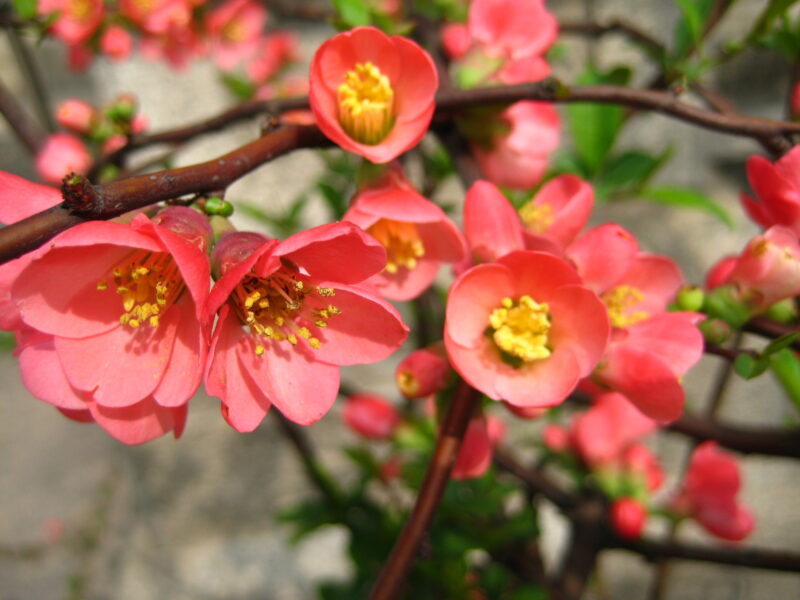
Flowering quince is a beautiful fruiting shrub that provides an early spring display with its vibrant blossoms in shades of pink, red, and white. Growing well in full sun, this shrub will flourish in various soil types, including sandy, loamy, or clay soils, making it adaptable to different gardens. Its stunning flowers are often followed by small fruits, which can be used in jams and jellies, further enhancing its appeal.
This hardy shrub requires minimal care after establishment. Light pruning helps to shape it and improve air circulation, but it is generally low-maintenance. Flowering quince makes an excellent choice for borders, hedges, or as a specimen plant in your garden. Its ability to thrive with little intervention while offering beauty and utility makes it a wonderful choice for anyone seeking to enhance their landscape effortlessly.
Inkberry
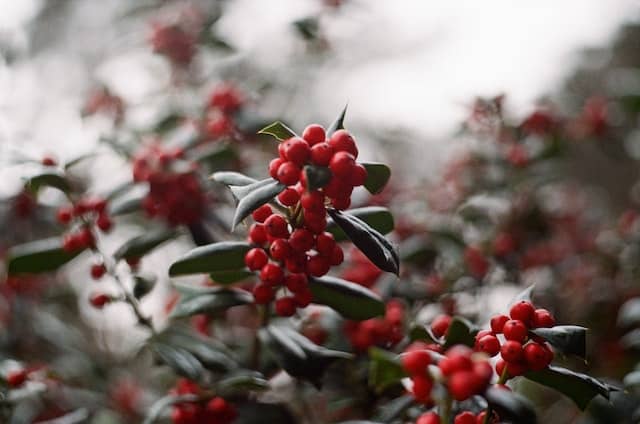
Inkberry, also known as Ilex glabra, is a versatile evergreen shrub that thrives in sunny spots and partially shaded areas. Its dense, glossy foliage adds year-round interest to any landscape, while the small black berries it produces serve as an attractive food source for birds. Tolerant of wet or poorly drained soils, inkberry is exceptionally resilient, making it suitable for gardens where other plants may struggle.
In terms of maintenance, inkberry requires very little. Once established, it is drought-resistant, although periodic watering may help it perform better during prolonged dry spells. Minimal pruning is necessary to maintain its shape and promote bushiness, making it an easy-care option for low-maintenance landscapes. Whether used as a foundation plant, in groupings for a hedge, or as a backdrop in perennial borders, inkberry offers both beauty and functionality to your garden.
Lambs’ Ear
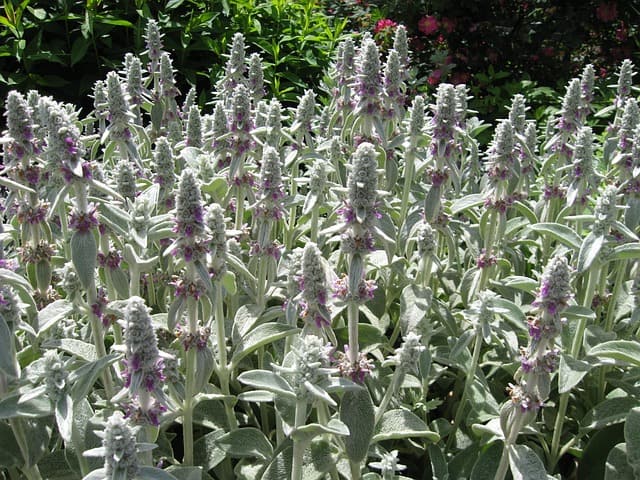
Lambs’ ear (Stachys byzantina) is a delightful herbaceous perennial that captivates with its soft, fuzzy foliage, reminiscent of—you guessed it—lambs’ ears. This plant thrives in sunny spots and well-drained soil, making it a superb choice for low-maintenance gardens. Its drought-tolerant nature means it can handle dry spells quite well, requiring little to no attention once established.
Beyond its delightful texture, lambs’ ear produces tall spikes of purple flowers in summer that attract pollinators. Its ability to spread can help fill in gaps in your landscape while effectively suppressing weeds. This plant works well in mixed borders, as a ground cover, or in cottage garden settings. Easy to care for, lambs’ ear delivers both visual interest and practicality to any sunny garden space.
Lantana

Lantana is a sun-loving perennial known for its striking clusters of vibrant flowers, which come in a diverse array of shades including yellows, oranges, and purples. Thriving in hot, sunny spots, lantana is remarkably drought-tolerant and can adapt to poor soils, making it a favorite for low-maintenance landscaping. The plant blooms from late spring until frost, ensuring your garden is adorned with color throughout the warmer months.
One of the endearing attributes of lantana is its ability to attract butterflies and hummingbirds, making it a fantastic choice for pollinator gardens. Minimal care is required; simply deadhead spent blooms to encourage further flowering and enjoy the colorful displays. Lantana is perfect as a border plant, in containers, or as part of a vibrant mixed garden, providing sustained beauty with minimal effort.
Marigold
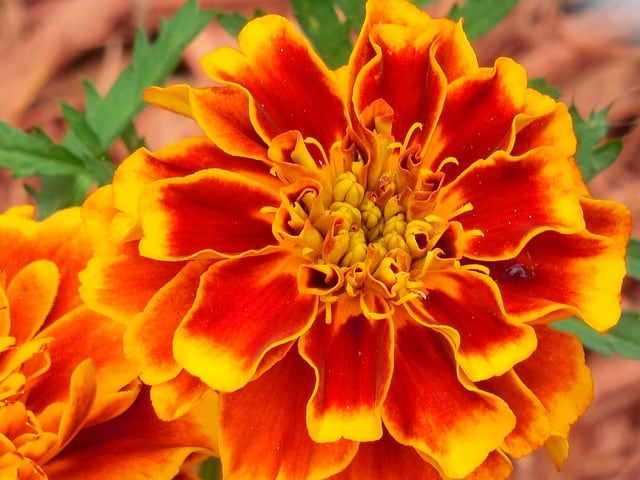
Marigolds are iconic flowers that bring cheer and vibrancy to any garden. Valued for their bright yellow, orange, and red blooms, they are incredibly easy to grow from seed or transplant. Thriving in full sun and well-drained soil, marigolds are low-maintenance and have an impressive flowering season that lasts from spring until frost.
One key benefit of marigolds is their natural pest-repelling properties. The scent of marigolds deters aphids and nematodes, making them a garden favorite for organic gardeners. Light watering during dry periods is often all they need to flourish. They work wonderfully in borders, as container plants, or even as companion plants in vegetable gardens, ensuring both beauty and functionality with little upkeep required.
Monkey Grass

Monkey grass, or liriope, is an evergreen perennial that excels in sunny areas to partial shade. Its lush, grass-like foliage thrives in well-drained soil and provides a dense mat ground cover that suppresses weeds effectively. Monkey grass is low-maintenance and requires little to no irrigation once established, making it suitable for a variety of garden settings.
One of the most appealing aspects of monkey grass is its versatility. It thrives in different soils and can handle drought situations quite well. During late summer, clumps of lavender flower spikes emerge, attracting pollinators and adding further appeal to your garden. Monkey grass can be used as a border plant, ground cover, or in mass plantings, making it an adaptable and low-maintenance choice for sunny spots in landscaped areas.
Panicle Hydrangea

Panicle hydrangea is an easygoing deciduous shrub that brings rich texture and beauty to full sun spaces. Known for its large, creamy-white blooms that transition to pink as the season progresses, it provides a stunning display throughout the summer. This hydrangea is particularly tolerant of drought and withstands poor soil better than other types, making it an excellent choice for low-maintenance gardens.
Once established, panicle hydrangeas require minimal care beyond an annual pruning to encourage strong new growth. They can adapt to various settings, from borders to standalone focal points in your landscape. Their long-standing blooms also offer visual interest in the fall. With a blend of resilience and beauty, panicle hydrangea is a perfect solution for gardeners seeking low-maintenance but strikingly beautiful plants.
Peppermint
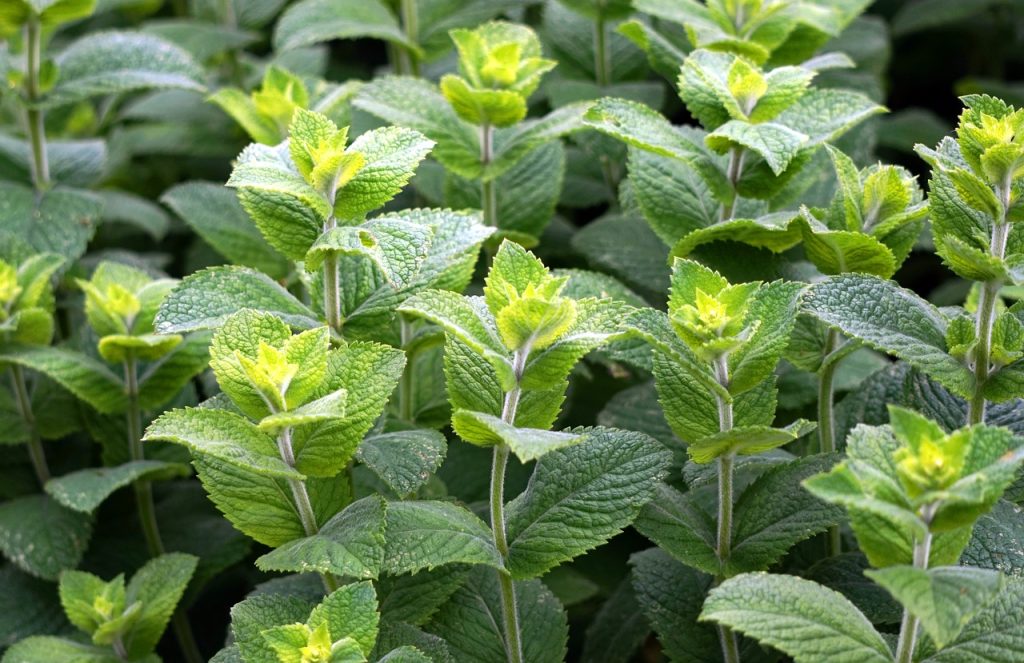
Peppermint (Mentha × piperita) is a fantastic herb that thrives in sunny locations, delivering both culinary value and aromatic pleasure. Once planted, peppermint establishes quickly and requires minimal maintenance beyond occasional harvesting. It prefers well-drained, moist soil, but it can tolerate a variety of conditions, making it easy to grow in various garden settings.
The fragrant leaves of peppermint add freshness to culinary dishes and teas, and its growth is typically vigorous, so it’s great to keep it contained in pots or specific areas. In addition, peppermint attracts pollinators like bees, enhancing your garden’s biodiversity. As a lovely and useful plant, peppermint offers an effortless way to add a fragrant touch and culinary delight to your sunny garden.
Pink Muhlygrass
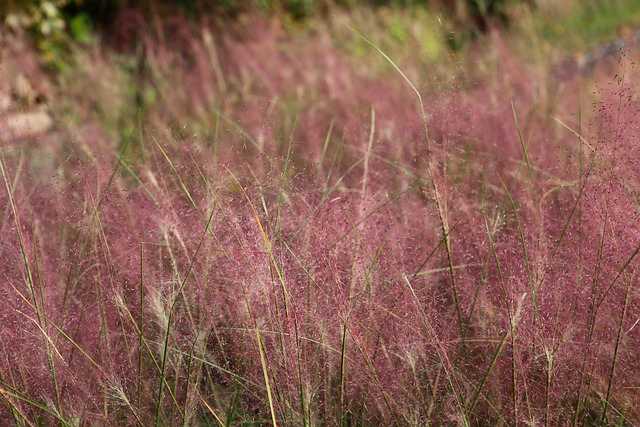
Pink muhlygrass (Muhlenbergia capillaris) is a striking ornamental grass that defines beauty and low-maintenance gardening. Known for its ethereal pink plumes, which create a billowy, cloud-like effect during the blooming season, it thrives in sunny spots and adapts well to various soil types. Once established, pink muhlygrass is drought-tolerant, minimizing the need for frequent watering.
This grass not only adds color but also creates movement in your landscape, collaborating beautifully with perennials and annuals in borders or mass plantings. Its soft texture contrasts wonderfully with hard landscape elements or other plants, enhancing the overall aesthetic. A simple cutback in early spring keeps it looking its best. With its stunning display and minimal care requirements, pink muhlygrass is a fabulous addition to any sunny garden.
Rosemary

Rosemary is a beloved culinary herb that thrives in sunny gardens, adding both flavor and texture to your landscape. This hardy shrub produces aromatic leaves and small blue flowers that bloom in spring, attracting pollinators to your garden. As a drought-tolerant plant, rosemary flourishes in well-drained soil and requires minimal watering once established.
In terms of maintenance, rosemary has few demands; light pruning during the growing season can encourage bushier growth. Its versatility allows it to be grown as a decorative border plant, in containers, or mixed within vegetable gardens. With its fragrant leaves offering culinary use, rosemary serves both practical and aesthetic roles, making it a fantastic low-maintenance addition to your sunny garden.
Rose of Sharon
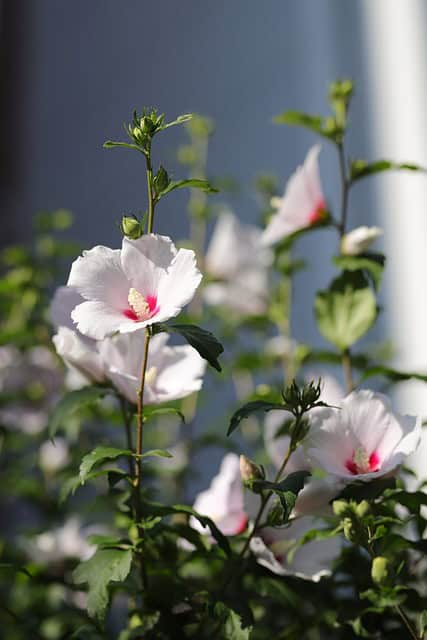
Rose of Sharon (Hibiscus syriacus) is a robust flowering shrub that brings summer vibrancy to sunny landscapes. Known for its large, showy blooms that appear in a variety of colors, including purple, pink, and white, it provides a tropical feel to the garden. Rose of Sharon adapts well to different soil types and tolerates drought conditions, ensuring ease of growth with minimal maintenance.
Once established, this shrub requires little care aside from occasional pruning to control its size and promote bushy growth. The flowers attract hummingbirds and butterflies, enhancing the pollinator-friendly aspect of your garden. Rose of Sharon works brilliantly as a stand-alone focal point, in mixed borders, or as part of a hedge, providing continuous color and interest throughout the summer months.
Sedum (Stonecrop)
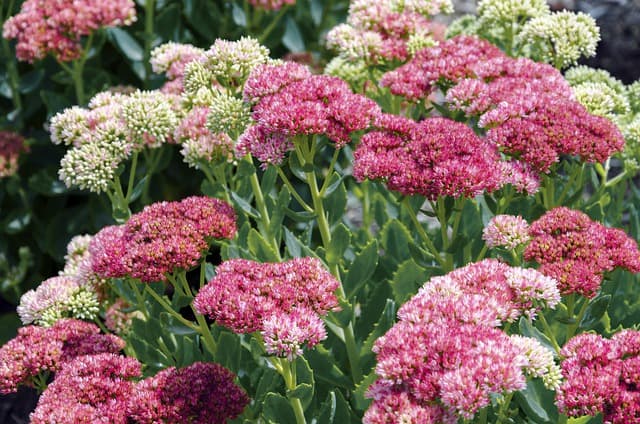
Sedum, commonly known as stonecrop, is a hardy perennial succulent that excels in sunny environments. Its diverse range includes low-growing ground covers to taller varieties designed for border plantings. Sedum thrives in well-drained soil, making it an ideal choice for dry or rocky landscapes. Once established, it requires minimal watering, showcasing exceptional drought tolerance.
Sedum’s striking foliage adds texture and color throughout the seasons, with many varieties showcasing beautiful hues of green, burgundy, or gold. Its charming clusters of star-shaped flowers attract butterflies, enriching the ecosystem of your garden. Minimal care is required; simply remove dead stems in spring and enjoy the continuous interest throughout the growing season. Ideal for rock gardens, container arrangements, or as a ground cover, sedum is perfect for busy gardeners who appreciate vibrant color without the hassle of upkeep.
Spirea

Spirea is a resilient deciduous shrub admired for its hardy nature and adaptability. Known for its clusters of small flowers available in shades of white and pink, it blooms profusely in late spring and early summer, providing a delightful display. Spirea adapts well to a range of soils and tolerates drought once established, making it a superb low-maintenance choice for sunny landscapes.
Minimal care is required, as heavy pruning is typically only needed in the spring to promote lush new growth. Its dense foliage makes it ideal for use as a foundation plant, in mass plantings, or as a mixed border perennial. Spirea is also beneficial for pollinators, enhancing the ecological value of your garden while delivering stunning beauty throughout the blooming season.
Yarrow

Yarrow (Achillea millefolium) is a classic perennial renowned for its resilience and vibrant flower clusters. Available in colors ranging from yellow to pink and white, yarrow thrives in full sun and exhibits low-maintenance requirements, significantly appealing to gardeners. It tolerates a wide range of soil types, prefers well-drained conditions, and is exceptionally drought-resistant once established.
Not only does yarrow boast a long blooming season from early summer to fall, but it also attracts beneficial insects, which supports biodiversity in your garden. A simple light pruning after the initial blooming can encourage a second wave of flowers. It works beautifully in mixed borders, wildflower gardens, or as a ground cover, providing ease of care and eye-catching blooms with little effort.
Zinnia
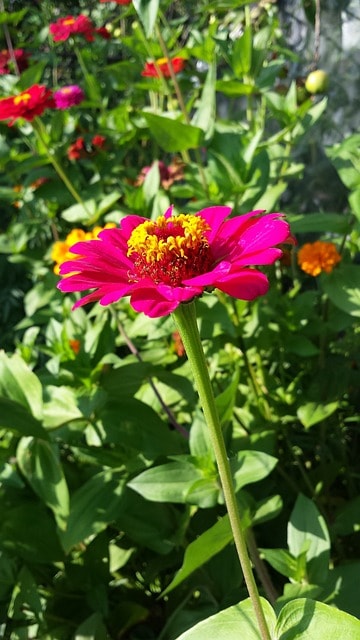
Zinnias are among the most beloved garden flowers due to their versatility and ease of care. With their bright, bold colors and long-lasting blooms, zinnias are perfect for sunny spots and thrive in well-drained soils. They can be easily grown from seed, ensuring a riot of color throughout late spring to frost. Zinnia flowers attract pollinators like bees and butterflies, enhancing the ecological value of your garden, and their reliable blooming season assures you of consistent beauty.
The maintenance of zinnias is minimal; regular deadheading will encourage continued blooming, and light watering during dry spells is often enough to keep them happy. These hardy annuals can be used in mixed beds, as borders, or as solo performers in containers, adding dynamic color with low intervention. Their cheerful disposition makes zinnias a joyous addition to any garden.



